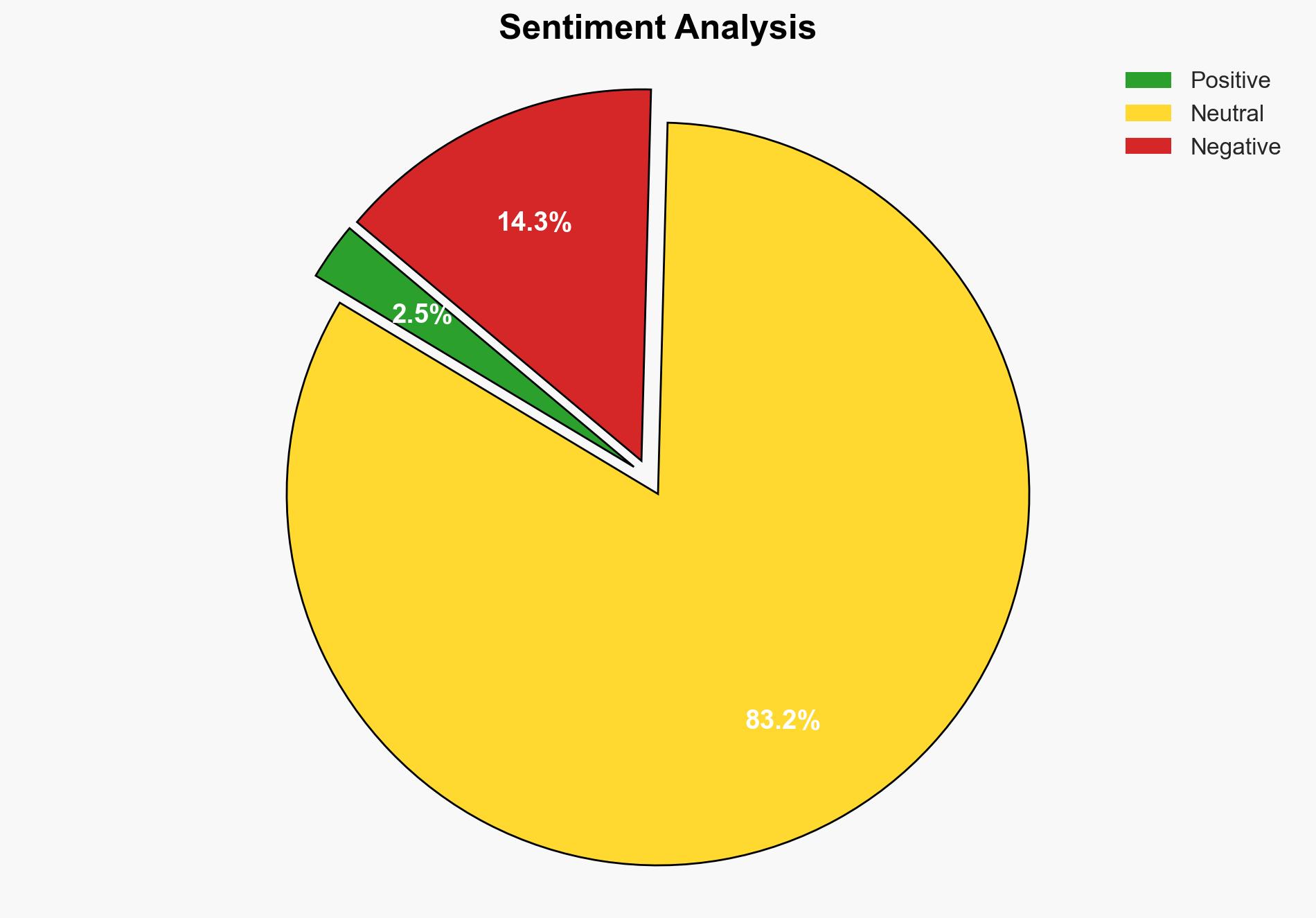‘White collar’ terror module was scouting for suicide bomber since last year Officials – The Times of India
Published on: 2025-11-16
AI-powered OSINT brief from verified open sources. Automated NLP signal extraction with human verification. See our Methodology and Why WorldWideWatchers.
Intelligence Report:
1. BLUF (Bottom Line Up Front)
The most supported hypothesis is that the ‘white collar’ terror module, led by Dr. Umar Nabi, was actively planning a significant vehicle-borne improvised explosive device (VBIED) attack in India, potentially targeting high-profile locations like the Red Fort. This module’s operations highlight a sophisticated, interstate network with potential international linkages. Confidence level: Moderate. Recommended action: Intensify intelligence operations and inter-agency collaboration to dismantle remaining network elements and prevent future plots.
2. Competing Hypotheses
Hypothesis 1: The ‘white collar’ terror module was primarily focused on executing a high-profile VBIED attack in India, with the Red Fort as a potential target. This hypothesis is supported by the accumulation of explosives, the involvement of educated professionals, and the timing around significant anniversaries.
Hypothesis 2: The module was a part of a broader radicalization and recruitment effort by Jaish-e-Mohammed (JeM) to establish a sustained operational presence in India, with the VBIED plot serving as a means to galvanize support and recruit operatives. This is suggested by the module’s interstate connections and the involvement of overground workers (OGWs).
Hypothesis 1 is more likely due to the concrete evidence of explosive materials and specific planning details, whereas Hypothesis 2 lacks direct evidence of a broader recruitment strategy.
3. Key Assumptions and Red Flags
Assumptions include the belief that the module’s primary objective was an imminent attack, and that Dr. Umar Nabi was the central figure. Red flags include the potential for deception by detainees during interrogation and the possibility of undisclosed international support or connections, particularly given the reference to a trip to Turkiye.
4. Implications and Strategic Risks
The exposure of this module indicates a sophisticated and potentially resilient network capable of planning high-impact attacks. The involvement of educated professionals suggests a shift in recruitment strategies, posing a risk of similar modules forming. Politically, this could strain regional relations and increase domestic security pressures. Economically, successful attacks could deter investment and tourism. Informationally, failure to prevent such plots could undermine public confidence in security forces.
5. Recommendations and Outlook
- Enhance intelligence-sharing mechanisms across state and national levels to identify and neutralize similar threats.
- Increase surveillance and monitoring of known radicalization hotspots and educational institutions with potential extremist influence.
- Best scenario: Successful dismantling of the network prevents future attacks and strengthens regional security cooperation.
- Worst scenario: Failure to address underlying radicalization leads to further plots and potential successful attacks.
- Most-likely scenario: Continued attempts by JeM to establish operational cells in India, requiring sustained counter-terrorism efforts.
6. Key Individuals and Entities
Dr. Umar Nabi, Dr. Muzammil Ahmad Ganaie, Dr. Adeel, Jasir alias Danish, Maulvi Irfan Ahmad.
7. Thematic Tags
Regional Focus, Regional Focus: India, Jammu & Kashmir, Haryana, Uttar Pradesh
Structured Analytic Techniques Applied
- Causal Layered Analysis (CLA): Analyze events across surface happenings, systems, worldviews, and myths.
- Cross-Impact Simulation: Model ripple effects across neighboring states, conflicts, or economic dependencies.
- Scenario Generation: Explore divergent futures under varying assumptions to identify plausible paths.
- Network Influence Mapping: Map influence relationships to assess actor impact.
Explore more:
Regional Focus Briefs ·
Daily Summary ·
Support us
·





